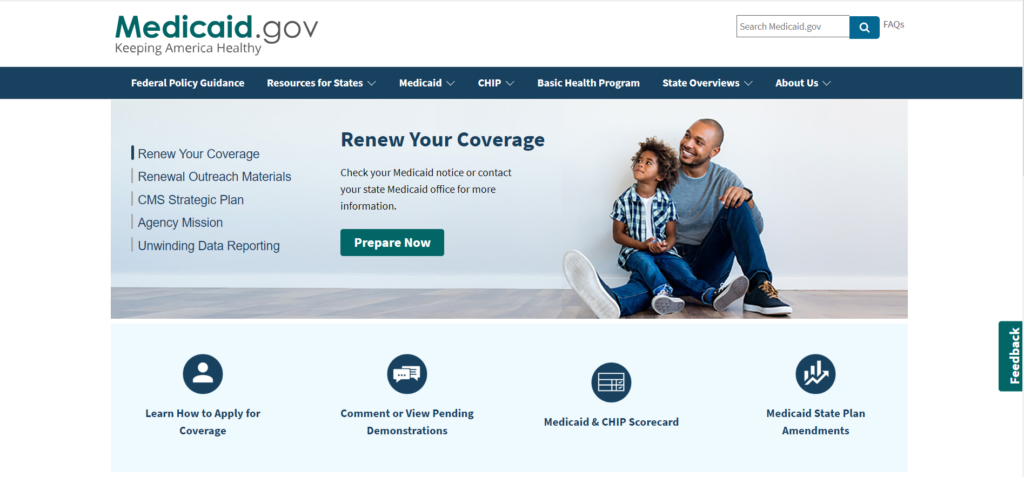Navigating healthcare options can be overwhelming, especially for retirees. Two of the most important programs for seniors in the United States are Medicare and Medicaid. While they sound similar, they serve different purposes and have different eligibility requirements. Understanding the differences between Medicare and Medicaid is crucial for retirees to ensure they have the healthcare coverage they need.
In this article, we will explore the key features of both programs, how they differ, and what retirees should consider when choosing the right coverage for their needs.
Understanding Medicare

Medicare is a federal health insurance program primarily designed for individuals aged 65 and older, though it also covers certain younger individuals with disabilities or specific health conditions.
Parts of Medicare
Medicare consists of different parts, each offering various types of coverage:
- Medicare Part A (Hospital Insurance)
This part covers inpatient hospital stays, skilled nursing facility care, hospice care, and some home health care. Most people receive Part A without a premium if they or their spouse paid Medicare taxes while working. - Medicare Part B (Medical Insurance)
Part B covers outpatient care, doctor visits, preventive services, and some home health care. There is a monthly premium for Part B, which varies based on income. - Medicare Part C (Medicare Advantage)
Part C is a private insurance plan that includes coverage from both Part A and Part B, and often includes additional benefits like vision and dental coverage. It may have different premiums and out-of-pocket costs. - Medicare Part D (Prescription Drug Coverage)
Part D provides prescription drug coverage through private insurance plans. Retirees can enroll in a standalone Part D plan or get drug coverage through a Medicare Advantage plan.
Eligibility for Medicare
To qualify for Medicare, individuals must be:
- Aged 65 or older
- A U.S. citizen or permanent resident
- Eligible for Social Security benefits or Railroad Retirement benefits
Individuals under 65 may qualify if they have a qualifying disability or specific conditions such as End-Stage Renal Disease (ESRD) or Amyotrophic Lateral Sclerosis (ALS).
Understanding Medicaid

Medicaid is a joint federal and state program designed to provide healthcare coverage for low-income individuals, including families, children, pregnant women, elderly individuals, and those with disabilities.
Eligibility for Medicaid
Eligibility for Medicaid varies by state, but it typically requires individuals to meet certain income and asset criteria. Here are some common eligibility factors:
- Income: Applicants must have income below a certain threshold, which varies by state and household size.
- Assets: Medicaid has limits on the value of assets that applicants can own. However, certain assets, such as a primary home, may be exempt.
- Categorical Eligibility: Applicants may qualify based on specific categories, such as being elderly, disabled, or having dependent children.
Benefits of Medicaid
Medicaid offers comprehensive healthcare coverage, including:
- Hospital and outpatient care
- Preventive services
- Long-term care in nursing homes
- Home and community-based services
- Prescription drug coverage
Key Differences Between Medicare and Medicaid
While both programs aim to provide healthcare coverage, there are significant differences between them:
Coverage
- Medicare primarily covers seniors and some individuals with disabilities, providing specific benefits for hospital stays, outpatient services, and prescription drugs.
- Medicaid covers a broader range of low-income individuals, offering comprehensive services including long-term care and assistance with daily living activities.
Cost
- Medicare typically requires beneficiaries to pay premiums, deductibles, and copayments. Some services may not be covered, leading to additional out-of-pocket expenses.
- Medicaid generally has lower or no premiums, deductibles, and copayments for eligible individuals. Many states also offer comprehensive coverage with minimal costs.
Administration
- Medicare is a federal program, and its rules and benefits are consistent across the country.
- Medicaid is administered by individual states, leading to variations in eligibility criteria, benefits, and costs.
How to Choose the Right Coverage
When considering healthcare options, retirees should evaluate their individual circumstances and healthcare needs. Here are some key factors to consider:
Assess Your Eligibility
Determine if you qualify for Medicare, Medicaid, or both. If you are eligible for both programs, you may have additional options for coverage.
Evaluate Your Healthcare Needs
Consider your current and future healthcare needs, including ongoing medical conditions, prescription medications, and potential long-term care needs. Understanding your healthcare requirements can help you choose the best coverage.
Explore Additional Coverage Options
If you have Medicare, you might consider enrolling in a Medicare Advantage plan or a Part D plan for prescription coverage. If you qualify for Medicaid, explore the specific benefits offered in your state to maximize your coverage.
Consult a Healthcare Advisor
Navigating healthcare options can be complex. Consider seeking advice from a healthcare advisor or financial planner who specializes in retirement planning. They can help you understand your options and choose the best plan for your needs.
FAQs
What is the main difference between Medicare and Medicaid?
The primary difference is that Medicare is a federal program for seniors and certain individuals with disabilities, while Medicaid is a state and federal program designed to provide coverage for low-income individuals and families.
Can I have both Medicare and Medicaid?
Yes, some individuals are eligible for both Medicare and Medicaid. This is known as being “dual eligible,” and it can provide additional coverage and benefits.
What do I do if I can’t afford my Medicare premiums?
If you’re having difficulty paying your Medicare premiums, you may qualify for programs that assist with costs, such as Medicaid or the Medicare Savings Program, which can help cover premiums, deductibles, and copayments.
How do I apply for Medicare or Medicaid?
You can apply for Medicare online at the Social Security Administration’s website, by phone, or in person at your local Social Security office. To apply for Medicaid, visit your state’s Medicaid website or contact your state’s Medicaid office for specific instructions.
Conclusion
Understanding the differences between Medicare and Medicaid is essential for retirees as they navigate their healthcare options. Both programs provide valuable coverage, but their eligibility requirements, benefits, and costs differ significantly. By assessing individual needs and exploring available options, retirees can make informed decisions to ensure they have the healthcare coverage they need in retirement.
If you have any further questions feel free to comment down below or contact retiresmart for any help!




